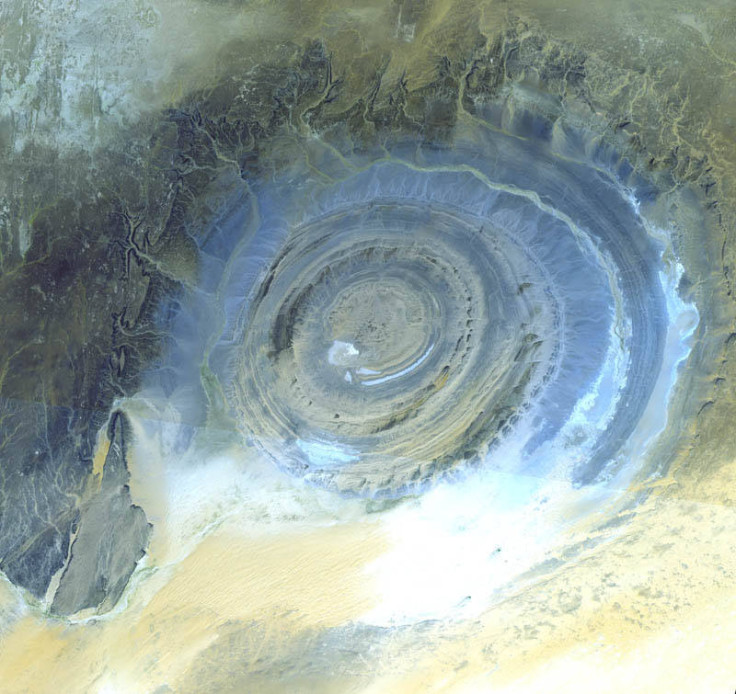Eye of the Sahara: Behold the Richat Structure that gazes into space

The Earth contains many wonders, and such is the scale of some that they cannot be fully appreciated from the ground. That's why we're urging you to take a casual trip to space, look down at the Sahara Desert, and behold the big, beautiful blue eye staring back at you.
The Eye of the Sahara, also known as the Richat Structure, is a naturally formed depression 40km in diameter. It is situated near Ouadane – a small desert town in Mauritania – and is a giant mass of blue and white rocks.
Nasa describes it on its website: "This prominent circular feature in the Sahara desert of Mauritania has attracted attention since the earliest space missions because it forms a conspicuous bull's-eye in the otherwise rather featureless expanse of the desert."
How it was formed is still up for debate. It was initially thought that it was born as a result of a meteorite impact or volcanic activity, but scientists failed to stump up enough evidence to support these theories. The most plausible explanation that geologists now tend to agree on is that it is simply seismic uplift on display due to erosion that has formed almost symmetrically.
© Copyright IBTimes 2025. All rights reserved.






















